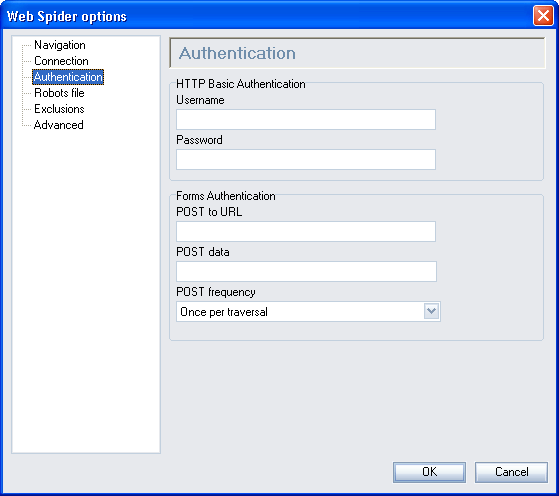Authentication
 View thumbnailView full size image
View thumbnailView full size imageBasic HTTP authentication
The external site you wish to index may have security in place. If so, the external web server rejects Perceptive Search WebSite Spider and a password request is issued to Perceptive Search. It will re-issue the page request, transmitting the User ID to supply if challenged, and the Password.
Forms Authentication
Some web sites require you to input your details into a form to permit entry. (For example when logging into a web mail account.) To utilize this functionality, you will need to view the HTML source of the login page, and identify the following fields from it:
- The FORM's action (which will be a URL) to specify as the 'Post to URL'. This may
be shown as a fully qualified URL such as http://www.mysite.com/login/formProcessor.php,
or may be shown as a relative address such as formProcessor.php.
Relative addresses must be translated into the fully qualified address by adding the relevant domain name and directories, etc. For example, if the login page is at http://www.mysite.com/login/login.html and the form's action specifies formProcessor.php then the Post to URL should be set to http://www.mysite.com/login/formProcessor.php. Note that an action of /formProcessor.php (starting with a forward slash) is relative to the root of the domain, e.g.http://www.mysite.com/. - Each input field will need to be identified and included in the 'Post fields', in
the format fieldname1=value1&fieldname2=value2&fieldname3=value3
For example, a user called 'Ben' logs in to a website with four input fields (including the Submit button);
username=Ben&password=notTelling&Group=coders&submit=Submit
The custom server authentication credentials are sent once, before the first starting URL is retrieved.